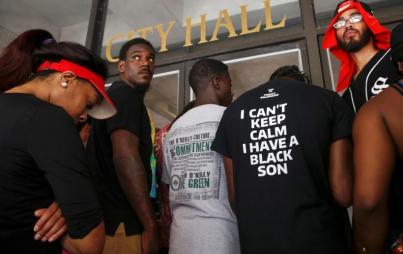
This is a guest post by Dr. Joan Swart, a forensic psychologist specializing in behavior assessment and modification, especially pertaining to criminal behavior, radicalization and mental illness. Read more stories as part of Ravishly's special Conversation series on women in prison here.
The criminal justice system for women needs an extreme makeover. With the 1980s came a new toughness on crime that ushered in practices of mandatory sentencing, three-strike laws and prison populations soared in male-dominated frameworks. Although women are much less likely to offend—especially in cases of violent and serious crimes—the number of incarcerated women is inordinately high, as the following statistics illustrate.
• In 2012, a total of almost 2.5 million females were arrested, about three times less than male arrests, while men were eight times more likely to commit murder. i
• Overall, arrest rates in the U.S. have declined from highs in 1989, but female arrests stayed constant at around 2,000 per 100,000 population.
• The number of women in prison has been increasing at a rate 50 percent higher than men since 1980.
• Women are more likely than men to suffer from internalized mental disorders such as depression and anxiety, their offenses are often relationship driven and linked to substance use.
• Men are much more likely to commit violent crimes against strangers, or during robberies and drug transactions, whereas females mostly target intimate partners.
• Women are also more likely to be first time offenders, use less violence, and commit a less serious form of the relevant offense.
Despite the fact that female offending arguably stays at the same base-rate and severity—there is no evidence to suggest otherwise—and arrest rates remain constant, the number of female prisoners has soared by 646% between 1980 and 2010.ii
It is abundantly clear that there is a complete over-reliance on incarceration to address crime. Criminal justice generally has a four-pronged justification: retribution, incapacitation, deterrence and rehabilitation. The current system is overly focused on the first two aspects, while often compromising the latter, which is arguably a more proportionate and sustainable approach, especially for women.
In general, prisons have increasingly become overfull “warehouses,” designed and operated by men, for profit, and with insufficient oversight. Both state and private prisons have a lack of mental health and other resources to care for prisoners and prepare them properly for release. Sentence durations have become disproportionate to offenses and sentences of life without possibility of parole (LWOP) are commonplace, even for adolescents and non-violent offenses.
Specifically focused at female offenders, I argue for the following changes:
• Stop privatization of prisons and implement proper oversight.
• Ensure adequate mental health services at prisons: assessment, supervision, and therapy, instead of pharmacological treatment only (incarcerated women have higher rates of physical and sexual abuse experiences, substance use problems, depression, anxiety, and suicidal behavior than women in the general population).
• Facilitate more regular and convenient outside contact by personal visits, online message boards, etc.
• Improve reentry to communities by vocational and skills training, education, case management and supervision, in- and outpatient mental health care, housing assistance, volunteer mentorships, social services, and family counseling.
• Implement gender-sensitive and trauma-informed cultures in prison and the criminal justice system.
• Develop and implement reliable risk assessment and management processes in the criminal justice system, including prison classification systems designed for appropriate custody designations for female inmates.
• Divert female offenders convicted of first-time, or lesser offenses, as well as younger and mentally ill offenders to alternative arrangements than incarceration.
• Ensure availability of social services for children of imprisoned women.
Females are undeniably important for the fabric of any effective and stable society and community, and their well-being and behavior affect younger and future generations. They are done a disfavor by the stereotyping and sensationalism in the media and popular depictions that mostly portray female prisoners as violent, worthless, mentally unstable, and lascivious. It is only an emphasis on responsibility and restoration throughout the criminal justice process and public representations that will best serve the women who enter the criminal justice system, with their families and communities, to repair and prevent the harm that illegal behavior causes.
i Uniform Crime Reports of the Federal Bureau of Investigation
ii The Sentencing Project







